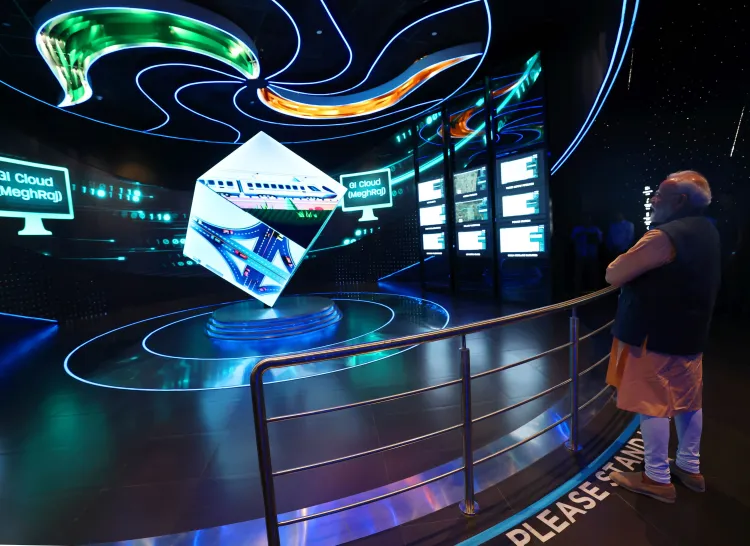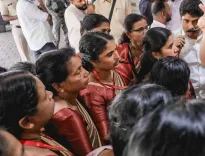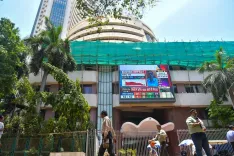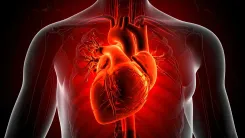How has India's aviation, highways, rail, and maritime sectors evolved during PM Modi's tenure?

Synopsis
Key Takeaways
- Significant investments in transport infrastructure have enhanced connectivity across India.
- Operational airports have increased from 74 to 162, improving air travel accessibility.
- The RCS-UDAN scheme has made air travel affordable for many.
- India's highways network has expanded by 60%, with increased construction speed.
- Railway investments have led to the rollout of new trains and electrification.
New Delhi, July 25 (NationPress) Under the leadership of Prime Minister Narendra Modi, who is now the second-longest serving Prime Minister of India, the nation has experienced a remarkable overhaul of its transport framework, encompassing highways, railways, maritime, and civil aviation. This transformation has been propelled by significant government investments.
Over the past 11 years, India has embarked on an unprecedented journey of infrastructure enhancement, fueled by a cohesive and integrated strategy through national initiatives such as PM GatiShakti, the National Logistics Policy, Bharatmala, Sagarmala, and UDAN, as per an official report.
This report indicates that PM GatiShakti has facilitated comprehensive planning across 44 ministries and 36 states/UTs using a GIS-based platform. Launched in 2021, the PM GatiShakti national master plan aims to optimize multimodal infrastructure connectivity across India's economic zones. Investments amounting to Rs 100 lakh crore are being effectively utilized through this integrated framework, focusing on seven vital sectors: railways, roads, ports, waterways, airports, mass transport, and logistics infrastructure.
Between FY 2019-20 and FY 2024-25, more than Rs 96,000 crore has been allocated to bolster the aviation sector. The number of operational airports in India has increased from 74 in 2014 to 162 by 2025, which includes heliports and water aerodromes. In the fiscal year 2024-25, Indian airports reported a total passenger traffic of 412 million, comprising 77 million international and 335 million domestic travelers, indicating a year-on-year growth of 9%, according to official data presented in Parliament.
The Regional Connectivity Scheme-Ude Desh ka Aam Nagrik (RCS-UDAN) was initiated in 2016 to improve regional air connectivity and make air travel more accessible for the populace. Since its inception, 637 RCS routes have been activated, connecting 92 previously underserved airports, including 15 heliports and two water aerodromes. Over 1.51 crore passengers have utilized these budget-friendly flights.
India's national highways network has expanded by 60 percent, from 91,287 km to 146,204 km over the last decade, with the construction speed of highways accelerating from 11.6 km/day in 2014 to 34 km/day. The Center's investment in road infrastructure has surged by 6.4 times between 2013-14 and 2024-25, and the budget for road transport and highways has increased by 570 percent from 2014 to 2023-24.
Since 2014, the budget for Indian Railways has risen by more than 9 times. This increased investment is evident in the rollout of new Vande Bharat semi-high-speed trains that span 24 states/UTs and cover 333 districts. Currently, 68 Vande Bharat trains are operational, with plans for an additional 400 world-class trains in the pipeline.
Since 2014, over 31,000 km of new tracks have been laid, and more than 45,000 km of tracks have been refurbished. The rate of electrification of the track network has surged from 5,188 route km between 2004-14 to over 45,000 route km targeted for electrification by 2024-25. This electrification has resulted in annual savings of Rs. 2960 crore for the railways (up to February 2025), enhancing financial efficiency, as per official data.
The capacity of the nation's ports has doubled to 2,762 MMTPA in the past 11 years, with the turnaround time for ships improving from 93 to 49 hours. A total of 277 projects have been finalized under the Sagarmala initiative, aimed at boosting port infrastructure.
Notable projects in the ports sector include the Vizhinjam International Deepwater Multipurpose Seaport, inaugurated on May 2, 2025, by Prime Minister Modi. This Rs. 8,800 crore project is India's first dedicated container transshipment port, strategically situated along international shipping routes, capable of accommodating the world's largest cargo vessels. This port significantly reduces India's dependency on foreign ports and enhances economic activity in Kerala.
India's inland waterways cargo has surged by 710 percent (from 18 MMT to 146 MMT) over the last decade. Additionally, a Rs 5,370 crore investment has been approved to boost the capacity of National Waterway-1 (Haldia to Varanasi).








